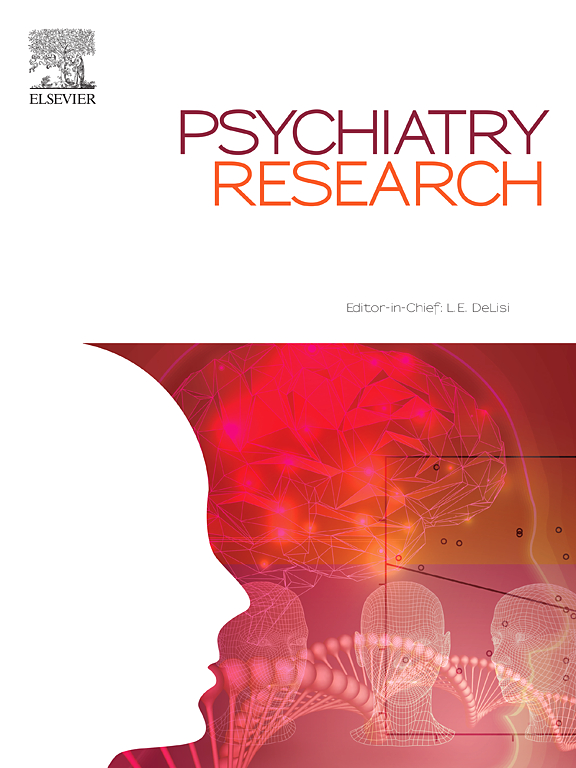精神分裂症和自闭症谱系障碍的计算语言研究
IF 4.2
2区 医学
Q1 PSYCHIATRY
引用次数: 0
摘要
计算语言分析越来越多地用于捕捉精神分裂症的形式思维障碍。尽管有很好的结果,在跨诊断背景下对精神分裂症的计算语言障碍的研究是有限的。特别是,共同特征、神经发育起源以及言语在精神分裂症和自闭症诊断中的作用表明,有必要探索这些群体的计算语言特征中的共性和区别。本文研究了35例精神分裂症谱系障碍患者、25例自闭症谱系障碍患者和25名健康对照者在自由言语和图片描述任务中的语义和结构特征。我们的研究结果表明,45个特征中只有5个在临床组之间存在差异。所有这些都来自结构领域,而语义特征在这些神经发育障碍之间没有差异。与对照组相比,临床组表现出较高的局部和全局语义相似性和负面情绪。此外,自闭症谱系障碍的言语在图片描述中的独特词频较低,在自由言语中的代词和副词也较短。在自由言论中,精神分裂症谱系障碍比自闭症谱系障碍和对照组使用更短的形容词。重要的是,精神分裂症谱系障碍的形容词频率低于自闭症谱系障碍的自由言论。总的来说,我们的研究结果表明,在精神分裂症和自闭症谱系障碍之间,相似的计算语言特征具有广泛的优势,表明这些障碍中存在共同的交流障碍。这一结果突出了跨诊断和神经发育视角在计算语言研究中的关键作用。本文章由计算机程序翻译,如有差异,请以英文原文为准。
Computational linguistic investigation in schizophrenia and autism spectrum disorders
Computational linguistic analysis has been increasingly used to capture formal thought disorder in schizophrenia. Despite promising outcomes, investigations of the computational linguistic disturbances of schizophrenia in a transdiagnostic context are limited. Particularly, shared characteristics, neurodevelopmental origins, and the role of speech in the diagnosis of schizophrenia and autism indicate a need to explore both the commonalities and distinctions in the computational linguistic profiles of these groups. In this study, we investigated the semantic and structural properties of speech samples of 35 patients with schizophrenia spectrum disorder, 25 patients with autism spectrum disorder, and 25 healthy controls in free speech and picture description tasks. Our findings showed that only 5 of 45 features differed between the clinical groups. All of these were from the structural domain, while semantic features did not differ between these neurodevelopmental disorders. The clinical groups demonstrated elevated local and global semantic similarity, and negative sentiment compared to controls. Moreover, the speech of autism spectrum disorder included lower unique word frequency in picture description, alongside shorter pronouns and adverbs in free speech relative to other groups. Schizophrenia spectrum disorder used shorter adjectives than autism spectrum disorder and controls in free speech. Importantly, adjective frequency in schizophrenia spectrum disorder was lower than in autism spectrum disorder in free speech. Overall, our findings demonstrated an extensive dominance of similar computational linguistic traits between schizophrenia and autism spectrum disorders, indicating shared communication disturbances in these disorders. This outcome highlights the critical role of transdiagnostic and neurodevelopmental perspectives in computational linguistic investigations.
求助全文
通过发布文献求助,成功后即可免费获取论文全文。
去求助
来源期刊

Psychiatry Research
医学-精神病学
CiteScore
17.40
自引率
1.80%
发文量
527
审稿时长
57 days
期刊介绍:
Psychiatry Research offers swift publication of comprehensive research reports and reviews within the field of psychiatry.
The scope of the journal encompasses:
Biochemical, physiological, neuroanatomic, genetic, neurocognitive, and psychosocial determinants of psychiatric disorders.
Diagnostic assessments of psychiatric disorders.
Evaluations that pursue hypotheses about the cause or causes of psychiatric diseases.
Evaluations of pharmacologic and non-pharmacologic psychiatric treatments.
Basic neuroscience studies related to animal or neurochemical models for psychiatric disorders.
Methodological advances, such as instrumentation, clinical scales, and assays directly applicable to psychiatric research.
 求助内容:
求助内容: 应助结果提醒方式:
应助结果提醒方式:


